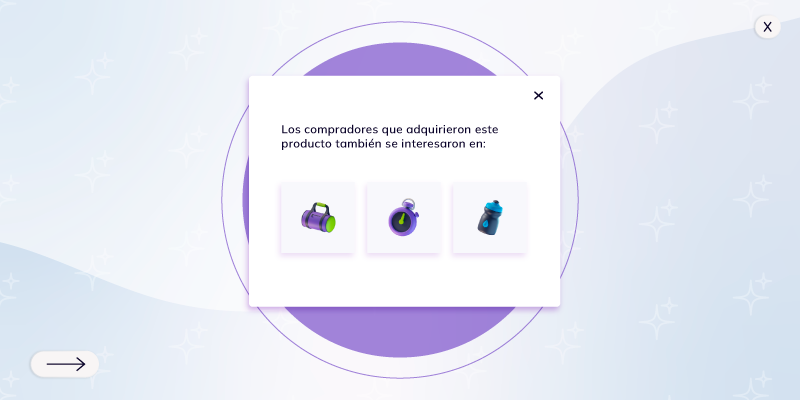Profitability in e-commerce is directly determined by the digital experience. Many e-commerce businesses are not profitable and the key to profitability is repeat customers. To get repeat customers, it is necessary to correct the frustrated customer experiences, especially when crossing channels from social media to brand sites.
The traditional retail pricing model was designed around physical store purchases. In them there is no need to pick, pack and transport the orders. There is no need to track products that do not arrive on time, and no need to worry about possible damage in transit.
Returns are in the 9% range. While in online commerce all these tasks are carried out by the business or the brand and returns are in the order of 20% or more in some sectors. This results in 44% of e-commerce retailers not reporting profits in the United States, while this percentage drops to 20% in the case of traditional commerce. This is data from a survey conducted by Ipsos for Salesforce and Publicis Sapient.
The survey shows that the first purchases in online shopping produce loss due to the high cost of customer acquisition (customer acquisition cost). On average, brands are losing $29 for every new customer. Unfortunately, as online merchants come under increasing pressure, the survey finds that 69% are struggling to make the necessary investments to increase profitability, compared to 39% in traditional commerce.

But investments are necessary. Customer Acquisition Cost (CAC) appears to be rising and inflation is adding pressure, especially when it comes to the cost of individual transportation. The Ipsos study finds that retailers are prioritizing digital customer experience (53%) and omnichannel (50%), which offer the best opportunities to increase profitability.
The quality of the experience directly impacts the probability that a customer will buy again.
And by doing so, you increase profitability. This is very important because shopping is an activity that has shifted to social media, but many customers prefer to shop on the brand's website. Going from one side to the other often causes a bankruptcy in the shopping experience. It is often a discouraging experience.
Almost half of consumers like to use social networks to discover new products, while only 12% believe that they are a good place to buy.
The study "The State of Social Commerce 2022", by Customer Think, also shows that almost 75% prefer to buy on the brand's site.
This preference is good for brands and gives them the opportunity to focus on collecting first-hand data from the website. Whereas when brands choose to use social media, it is the networks that retain control of the data and the ability to manage it. In this way it becomes difficult for a customer to become a regular customer of the brand if they buy through the networks. One could even say that it is not the brand that acquired a new client but the social network.
Research shows that within two years of Instagram Checkout, a third of brands (including Prada, Dior and Ouai Hair) have stopped using it and are directing traffic to their own websites. It is clear that some brands are beginning to reject the intermediation of networks.
As stated above, the CAC is usually higher for online shoppers. Some products that are above 200 dollars can sometimes be more profitable online than in the physical store, but in general, the study shows that the first conversions are not profitable due to the high cost of acquisition. But when the customer repeats purchases, the equation varies considerably and has significant profit margins. This demonstrates the importance of capturing customer-related information and the importance of delivering a great digital experience beyond where the customer begins and ends their shopping experience.
Another important learning for brands is that if customers use the social network every time they buy, they will always be first-time customers, and this means that customer acquisition costs and other associated costs will work against profitability. This way you may get higher sales volumes, but lower profit margins and you don't have the possibility to use customer data to convert the buyer into a regular customer.
Providing great service is also critical to making the second sale. Consumers choose to spend again based on price and previous experience. That's why it's so important that the first purchase goes smoothly. This will allow cementing the relationship with the consumer who will feel the support of the brand and will continue to buy. If a client is lost, there is only a 13% chance of winning it back, according to some studies.
At every opportunity, brands need to capture the identity of the customer and their consent to obtain their data. In particular, the email address is important.
It is sufficiently proven that email is very effective in building relationships with customers and getting them to buy again.
The State of Social Commerce report shows that 81% of customers complain of unsatisfactory experiences when the relationship is through social channels.
Product inconsistencies, broken links, inventory issues, happen when the experience shifts from a rich social environment to a functional product detail page. It is not recommended to promote products with low stock and items that are sold very easily on social networks, because this can lead to inventory problems. Promotions increase traffic and create chain availability issues. Customers have expectations that promoted products are available and when they are not this leads to disappointment, which can turn into frustration if the purchase order is not fulfilled on the networks, and due to a desynchronization the order is canceled after the purchase .
It's time to start thinking about what happens after the customer clicks on a social media ad and goes on to a great experience on the brand's website that will make them buy again. The link between experience and profitability in online trading has never been clearer than it is now.



